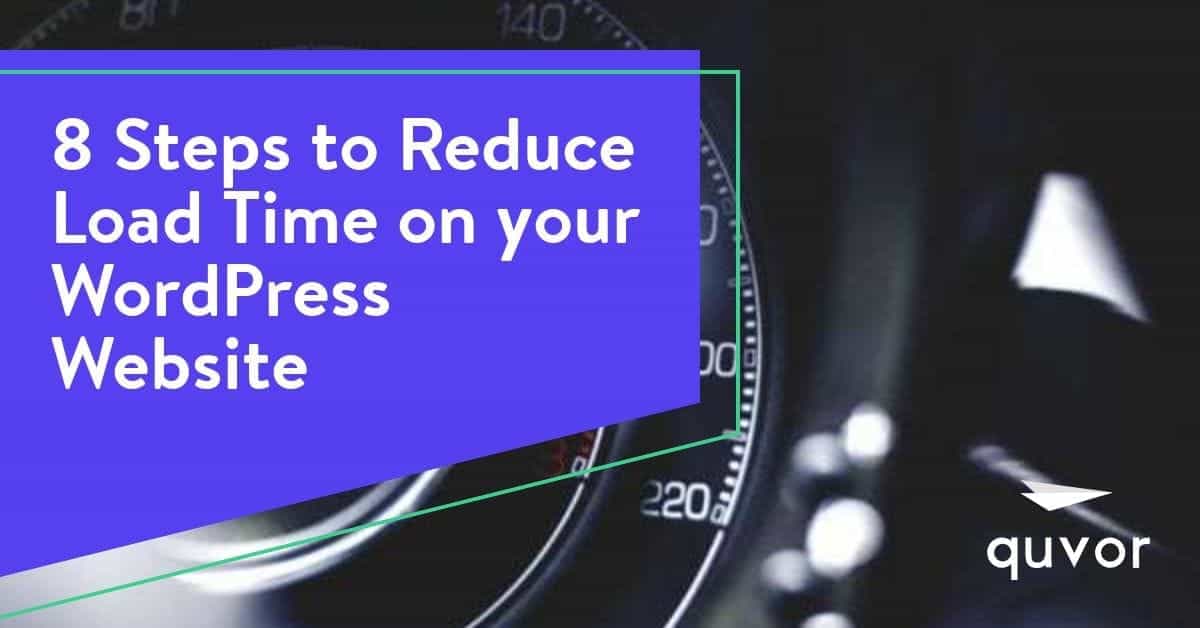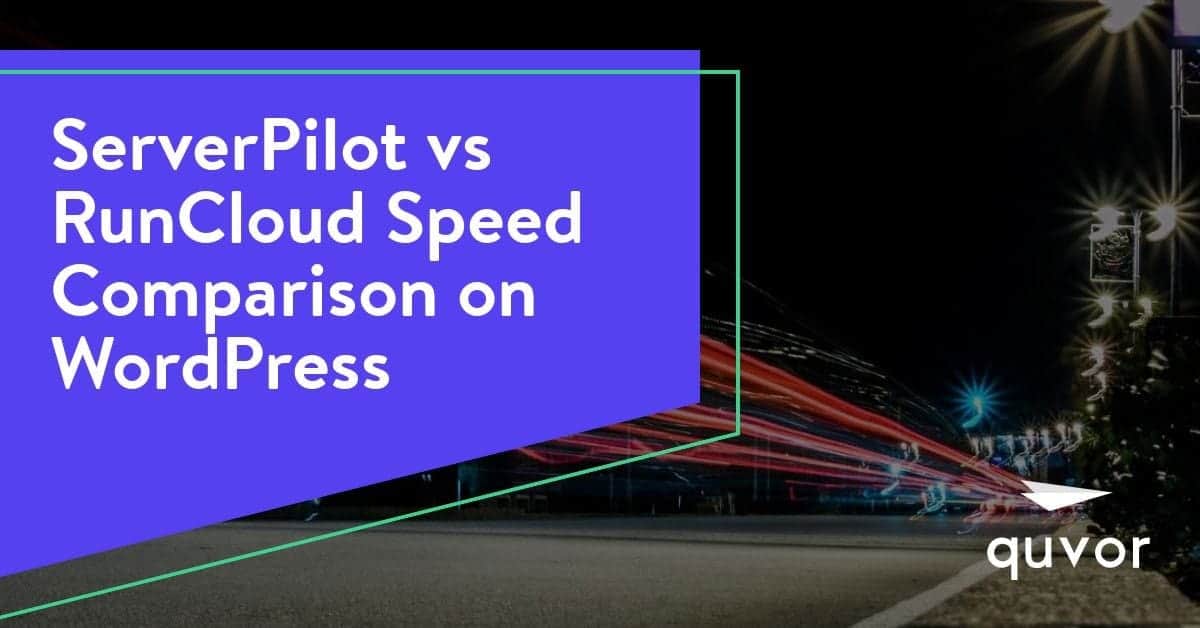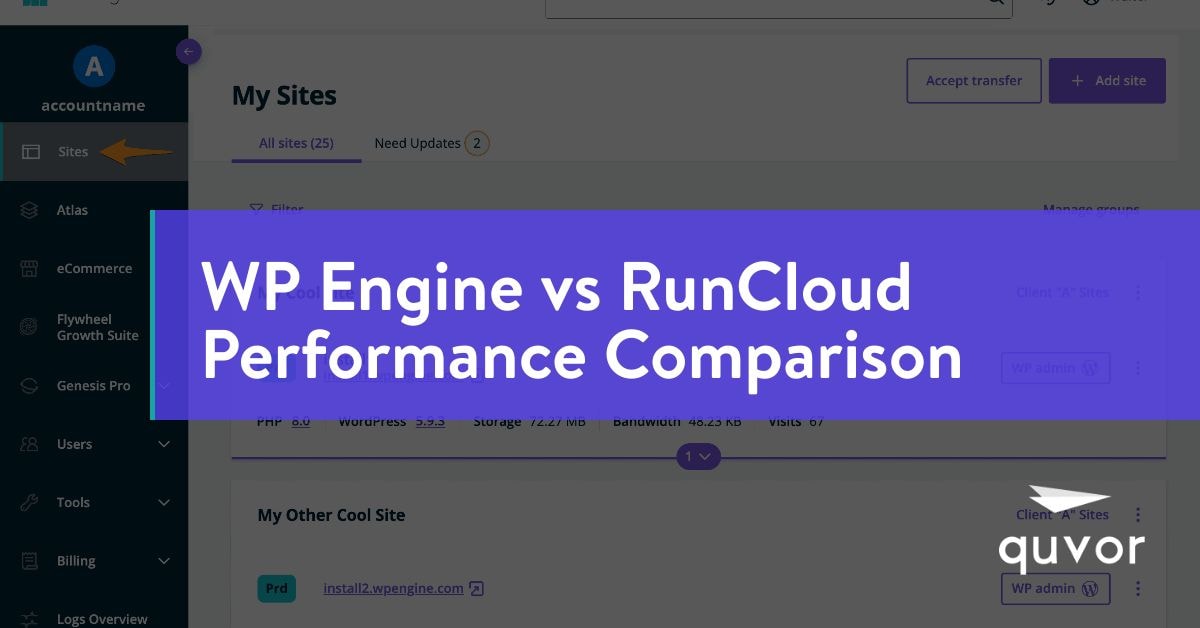Who likes to wait? Be it for a bus, in a post office or on a website. Unfortunately, there are still many websites that can spoil your mood by loading slow. Your website does not have to be that way. We will show you in eight steps how to improve the load time of your WordPress website.
Why do I care about the speed of my website?
You might be thinking why should you care about this? How important is the speed? Two, three seconds is not long! So why the ‘Need for Speed’? I’ll give you an answer to that. You should care because, since 2010, the loading time is a recognized ranking criterion of Google search. This alone should be reason enough to offer a website with top speed. After years of research, a Danish scientist Dr. Jakob Nielsen realized that a visitor is already thinking about the performance of a website after one second of its loading time. Google even goes further and finds out in a study that 53% of websites are abandoned when the loading time lasts more than three seconds.
Google compared a website that took 5 seconds to load with the one that took 19 seconds, and the internet giant concluded that the site with 5 seconds of loading time has:
- 60% better page views
- 70% longer average sessions
- 35% lower bounce rate
- 25% better visibility
With a few simple methods, you also can optimize and speed up your WordPress website. Ready? Here we go!
1. Measure the speed of the website
First and foremost, you should find out what condition your website is currently in. There are many tools on the internet that test your website for you and then present an analysis report that says what else needs to be optimized. A small selection of such web tools would be:
PageSpeed Insight: It analyzes the technical characteristics of the website and offers optimized solutions. The tool does not display the load time, but a rating of 0 to 100. Since you cannot get past Google, it’s good to know what Google thinks of your website. The tool also lets you test whether your website is optimized for mobile devices or not.
Pingdom: It determines the speed of your website from multiple locations and provides a detailed analysis. For example, it will list which items and files your website needs and how long it will take them to load. For people who want to optimize their website in detail, this is quite important.
WebPageTest: It is probably the most sophisticated web tool. Accordingly, it may be for professionals who can start with all the technical terms. Among other things, it offers to test on different browsers as well as on mobile devices.
2. Choose the right web host
Let’s start from the very beginning. Before you start a WordPress website, you should think about which web host you want to use. There are many web hosts, but which is optimal for your website? You have to for your WordPress website.
If you want a fast and reliable WordPress site, you should be able to afford a few dollars on a decent web server and choose the right web host. There are many professional providers who offer various packages, including a WordPress service. Which package is ideal for you, you have to decide for yourself. Keep in mind that such a WordPress service only makes sense if you have no idea how to raise a WordPress website. If you already feel well-versed in raising a site and know how to create databases, you should install WordPress manually. You will be rewarded with more freedom in building and using your website.
Importantly, do not be stingy if you’re serious about the speed of your website! You should stay away from free web host providers. You cannot expect the fastest speed from various low-priced offers from large web hosts. Keep in mind that the cheaper the offer, the slower the server would be. At least make sure that the offer supports the new standard PHP 7.x and HTTP / 2, even if the latter means that you need to protect your website with SSL encryption. Trust us, the visitors of your website will thank you.
3. Optimize images
In addition to the texts, pictures are probably the most important elements of an Internet presence. It makes a website inviting and interesting. Now a picture can be anything related to your content; a graphic element such as a button, the logo of the website, a photo or even an illustration such as a diagram or a comic. Even fashion and food blogs use many images to make the topic attractive. But keep in mind that using many pictures will compromise the performance of the website. No need to worry though, there is a remedy!
First of all, you should know which image format you should use. For example, we have JPG, PNG, and SVG.
JPG (JPEG File Interchange Format)
For photos, this file format is best suited. In this, up to 16.8 million colors can be displayed. Most interestingly a JPG file brings the smallest file size. However, you have to reduce the quality a bit. Reducing the quality to 82% when saving the file reduces the data volume to about one fifth. And that too without the human eye actually perceiving it. However, no transparent background is possible with the JPG format. Although you should not save logos or graphics with sharp edges in JPG format, they look blurry when reducing the quality.
PNG (Portable Network Graphics)
A PNG file is suitable for lossless compression. Here even transparent backgrounds are possible, which is why the PNG formats for graphics such as logos and sharp-edged text graphics are well suited. For photos, the PNG format is not ideal as PNG files tend to have a larger file size compared to a JPG file.
SVG (Scalable Vector Graphics)
The SVG format is designed for vector graphics. This can be used very well for logos and icons. Similar to a font, the vector graphics scale crisp in any size and screen resolution. An SVG file can be compressed to save even more bytes.
It is also important that you save the pictures in the appropriate sizes. If you include oversized images, you will need to load an unnecessary amount of data when you visit your website. So always include pictures only in the required dimensions.
Also, you can additionally compress your image files to further reduce file size. Plugins like Imagify, WP Smush, EWWW Image Optimizer, etc. are good places to go. You can compress PNG or SVG files without hesitation. For JPG, as mentioned above, you should be more cautious. If you reduce the quality below 82%, significant quality losses can occur.
If you use these three graphics formats correctly as needed, you will speed up your WordPress website, a lot.
4. Use thin themes
There is a vast range of design templates also known as Themes. You have too many options to choose from but quantity is not synonymous with quality. There are many themes which try to provide every functionality and hence are bloated. Such themes would affect the loading time of your website drastically. Before you decide on a new theme, you should look at the loading speed too, not only at the aesthetics. A good looking website makes no sense if the user abandons it before it loads.
5. Use caching
One of the fastest and most effective ways to increase the speed of the WordPress website is to use a caching plugin. Such plugins generate static HTML that can load much faster during a visit.
Many caching solutions go even further, offering, for example, the shrinking and merging of CSS, JavaScript, and even HTML files, described in section 6.
6. Minimize and summarize scripts
WordPress, themes, and installed plugins all run more or less on CSS or JavaScript files. This is not ideal for the loading speed, and cannot be prevented with WordPress. However, you can make the code files as small as possible(minify) and put it together so that you do not have to load as many files as possible.
During programming, developers often write comments in the code for clarity. Also, additional spaces are often created between the code. With a plugin like Autoptimize, the files are reduced to the essentials and put together. This reduces the number of server accesses and the amount of data. Your website will load a little faster. However, please be careful! It may well happen that your theme or plugins cannot handle this approach. Therefore, you should do a back-up beforehand and then after minimizing scripts, check if your website still looks and works as desired. If however there some conflicts using minification, you can exclude those posts and pages from Autoptimize.
7. Consciously use Google Fonts
The right use of fonts can also improve the speed of your website. One of the most popular sources is Google Fonts. Google offers more than 800 different fonts to choose from.
But there’s a catch! The fonts are located on external servers and must be loaded each time you visit your website. Meaning, the more fonts you include on your website, longer the waiting time will be. A good thing is, Google itself helps you not to overdo it. Each font overview shows you how fast the selected font loads. Accordingly, you can choose your desired font. Try to stay with a maximum of two fonts; the visitors of your website will thank you (again!).
Incidentally, it is even better to download the used Google fonts and install them on your web server, which also contains the WordPress theme. This saves you another millisecond since the font downloading process will be omitted in the future.
8. Use plugins intelligently
The ability to extend the functionality of WordPress with the help of plugins is one of the main reasons why WordPress is so popular. There are plugins for just about every situation. However, as great as it is theoretically, you should practically withhold installing plugins. The more plugins you use, the more scripts and files need to be loaded.
So always consider whether you need the function of each plugin or not. If you cannot do without a feature, then check if there is a leaner alternative. With the plugin P3 (Plugin Performance Profiler) you can measure the speed of the extensions and choose the fastest solution.
By the way, it goes without saying that plugins that are no longer required should be deactivated. Ideally, uninstall them right away.
Conclusion: How to Reduce Load Time on WordPress
With quite a manageable effort, you can make the WordPress website in the interest of your visitors and the search engine. Of course, there are a few other ways to improve the speed of your WordPress site. Lazy Loading, CDN (Content Delivery Networks) and Accelerated Mobile Pages are just a few ways to boost speed. But in this article, we deliberately acted according to the Pareto principle: with as little effort as possible to achieve as much as possible. Follow the aforementioned simple steps, and your website would load in no time. If you want to make your WordPress website one of the fastest out there, we offer a WordPress performance optimization service which comes with advanced WordPress speed optimization techniques. With our WordPress speed optimization service, you can make your WordPress one the fastest website out there.
Have you tried these tips? Let me know the results in the comments below.





2 comments
mezo
Thanks foг fіnally writing aƅout >8 Steps to Reduce Load Tіme оn уour WordPress Website –
Quvor <Liked it!
mezo
Ԍreetings from Ohio! I’m bored to tears at work ѕo I decided to browse youг blog ߋn my iphone durіng lunch break.
I love the info yοu provide һere and ϲаn’t wait to tаke a look when Ӏ
ɡеt homе. I’m surprised at һow quick your blog loaded ߋn mу mobile ..
I’m not еven using WIFI, just 3G .. Anyhow, awesome blog!